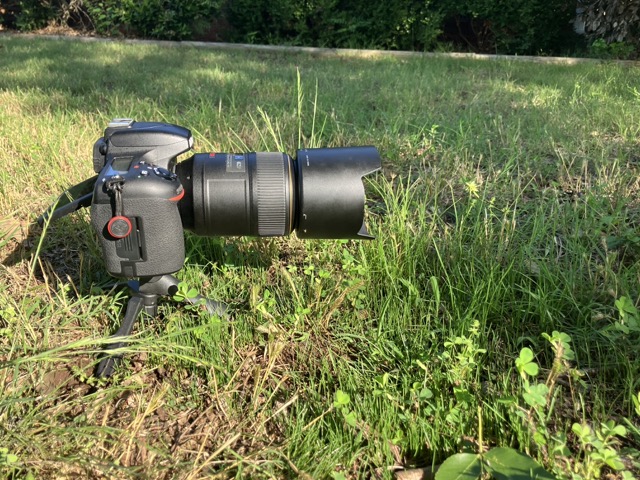
This photo changes things up in a different way than I expected. One fairly common thread that runs through a lot of my pictures recently is that many of them are improvements, so to speak, upon an original version that was created years ago. Some of these are intentional, others coincidental, but part of the continual journey of growth and improvement in photography, at least for most people, is learning from what you have done before and then building on it to create something even better.
This photo, however, changes things just a bit. It builds on an image of a coneflower from July 16, 2014, that I hot with my original camera kit: A Nikon D200 and 50mm f/1.8 lens. A combination that is positively ancient compared to modern gear, combined with almost no knowledge of light, exposure, composition, or any other fundamental elements of photography. I had no idea what I was doing, but I took a picture that I was proud of and have since printed to hang on my wall. I knew there was room for improvement though…
A few weeks ago as I walked from my car to my office on a rainy weekday morning, I saw a scene with some coneflowers that was not too dissimilar from the one I encountered over a decade ago. I had my Nikon D750 and 105mm f/2.8 lens in my backpack and thought that this would be a great opportunity to use my years of experience to take a picture of a coneflower that was even better than the original. I carefully composed the shot, taking into account things like the aperture (to control depth of field), the angle of light, the background, and the other flowers that might be in the frame, and took a dozen photos–my favorite of which you see featured above.
But here’s the odd thing: I still prefer the original. This doesn’t usually happen with my photography, and it’s got me thinking about things a bit differently lately. Normally a picture I take today, which was inspired by a similar shot I took years ago, is almost always improved in many ways. It’s normal for most photographers, and a sign of growth and change. It’s a good thing. But in this case, the opposite happened. The original has a lot more contrast, a lot more shadow detail, and also a bit more of something I can’t really quantify: character. It just feels more…moody, perhaps? Brooding, even? The petals have more life and texture to them, and I prefer the giant brush stroke (as it were) of dull red and green on the right side over the blurry yellows in the background of the new one. There’s even a glint of light on one of the flowers in the background, thanks to a bit of rain that had not yet rolled off, which adds to the overall tone of the original image.
This isn’t me trying to be self-deprecating or anything like that. It’s just an observation, and one that has got me thinking about my photography a little differently lately. Or maybe my editing style, which has, I think, grown a little punchier and brighter over the years. Maybe I need to tone things down a bit, and let my photos breathe a little instead of dialing the Lightroom sliders all the way to one edge or the other. Whatever it is, I do like that this photo gave me an opportunity to stop and contemplate things in a rather unexpected way.




